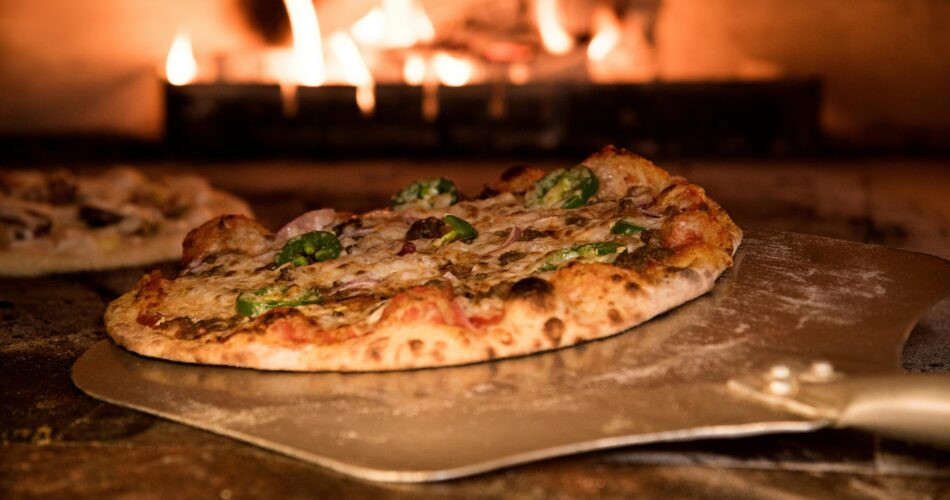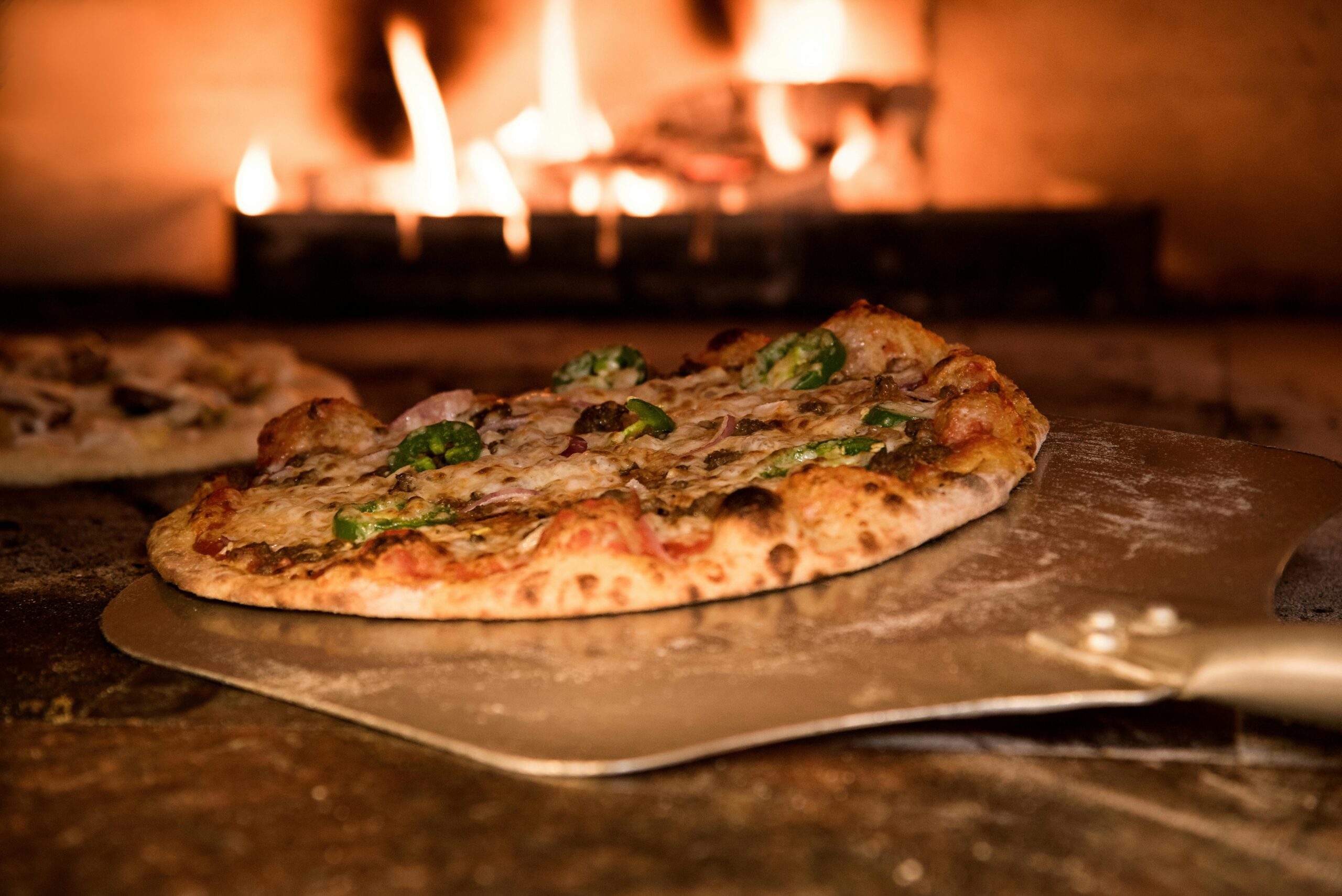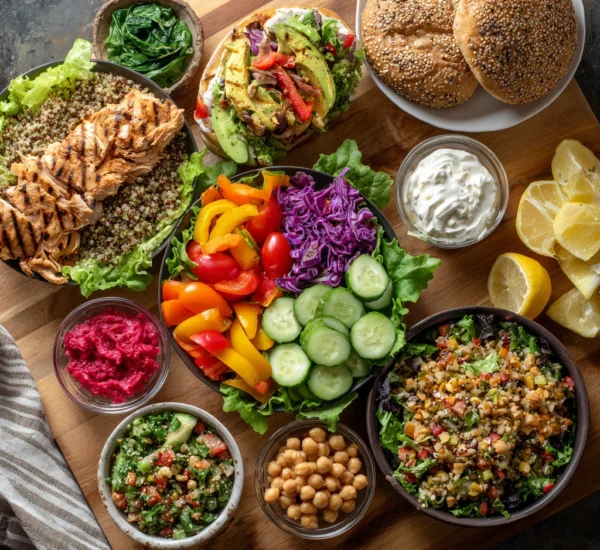Classic Margherita Pizza: A Timeless Taste of Italy
The Margherita pizza, a symbol of Italian culinary pride, is celebrated for its simplicity and the harmonious blend of its fresh ingredients. Representing the colors of the Italian flag—red tomato, white mozzarella, and green basil—this pizza offers a delicious taste of Italy’s rich culinary heritage. This article will guide you through the history, ingredients, preparation, and variations of this iconic pizza, ensuring you can appreciate and recreate this classic dish at home.
The Story Behind the Slice: History and Origins
The Margherita pizza’s history is interwoven with Italian royalty. Legend has it that in 1889, Queen Margherita of Savoy visited Naples and, tired of the elaborate French cuisine favored by the upper class, requested a selection of local pizzas. Of all the pizzas presented, she particularly enjoyed one topped with tomatoes, mozzarella, and basil. This pizza, reminiscent of the Italian flag, was named in her honor, and the Margherita pizza was born.
While the story is widely accepted, variations of pizza with similar toppings existed before the Queen’s visit. The popularity of the Margherita is undoubtedly linked to its royal association, solidifying its place in Italian culinary history and elevating it to a national symbol. This association helped popularize pizza beyond Naples and spread its fame throughout Italy and eventually the world.
The simplicity of the ingredients speaks to the culinary traditions of Naples, where fresh, local produce is highly valued. The Margherita pizza highlights the quality of these ingredients, allowing their individual flavors to shine through and create a perfectly balanced dish.
Building Blocks of Flavor: Essential Ingredients
The success of a Margherita pizza hinges on the quality of its core ingredients. Each component plays a crucial role in achieving the authentic flavor profile.
- Dough: The foundation of any great pizza is the dough. A traditional Neapolitan pizza dough is made with just four ingredients: flour, water, salt, and yeast. The specific type of flour, often a finely milled “00” flour, contributes to the dough’s elasticity and characteristic texture. It must be kneaded properly and allowed to rise slowly, developing a complex flavor and light, airy crust.
- Tomato Sauce: Fresh, ripe San Marzano tomatoes are the gold standard for Margherita pizza sauce. These tomatoes, grown in the volcanic soil near Mount Vesuvius, are known for their sweetness, low acidity, and intense flavor. They are typically crushed or pureed and seasoned simply with salt, sometimes with a touch of olive oil and garlic. The sauce should be light and fresh, not overly cooked or heavily seasoned.
- Mozzarella Cheese: Fresh mozzarella, preferably fior di latte (made from cow’s milk) or mozzarella di bufala campana (made from water buffalo milk), is essential. The cheese should be sliced thinly or torn into pieces and distributed evenly over the sauce. High-quality mozzarella melts beautifully, creating a creamy, slightly tangy counterpoint to the sweet tomato sauce.
- Fresh Basil: Fresh basil leaves are the finishing touch, adding a vibrant aroma and peppery flavor. The basil should be added after the pizza comes out of the oven, preserving its freshness and preventing it from wilting. A few carefully placed leaves are all that’s needed to complete the Margherita’s iconic presentation.
- Olive Oil: A drizzle of high-quality extra virgin olive oil adds richness and enhances the flavors of all the ingredients. Use a fruity, aromatic olive oil for the best results.
Crafting the Perfect Pizza: Step-by-Step Instructions
Making a Margherita pizza at home is a rewarding experience. Here’s a step-by-step guide to help you create a truly authentic pizza:
1. Prepare the Dough: If making your own dough, follow a trusted Neapolitan pizza dough recipe. Allow ample time for the dough to rise properly, ideally for several hours or even overnight in the refrigerator. This slow fermentation process develops the flavor and texture of the crust. Alternatively, you can purchase high-quality pre-made pizza dough from a reputable bakery or grocery store.
2. Make the Sauce: Crush or puree the San Marzano tomatoes. Season with salt and a drizzle of olive oil. You can add a clove of minced garlic for extra flavor, but keep the sauce simple and fresh. Avoid cooking the sauce for too long, as it should retain its bright, fresh tomato flavor.
3. Preheat the Oven: Preheat your oven to the highest possible temperature, ideally 500-550°F (260-290°C). If you have a pizza stone or baking steel, place it in the oven while it preheats. This will help create a crispy crust.
4. Shape the Dough: Gently stretch the dough into a thin, round shape, leaving a slightly thicker crust around the edges. Avoid using a rolling pin, as this can compress the dough and result in a tough crust.
5. Assemble the Pizza: Spread a thin layer of tomato sauce over the dough, leaving a small border for the crust. Distribute the mozzarella cheese evenly over the sauce.
6. Bake the Pizza: Carefully transfer the pizza to the preheated pizza stone or baking steel. Bake for 6-8 minutes, or until the crust is golden brown and the cheese is melted and bubbly.
7. Add the Basil: Remove the pizza from the oven and immediately top with fresh basil leaves. Drizzle with extra virgin olive oil.
8. Slice and Serve: Slice the pizza into wedges and serve immediately.
Beyond the Basics: Variations and Twists
While the classic Margherita is a masterpiece in its own right, there are several variations and twists you can try to customize your pizza:
- Margherita Extra: This variation includes adding a sprinkle of Parmesan cheese before baking for an extra layer of savory flavor.
- Margherita DOP: This version adheres to the strictest Neapolitan pizza guidelines, using only certified San Marzano tomatoes and mozzarella di bufala campana.
- Spicy Margherita: Add a pinch of red pepper flakes to the tomato sauce or drizzle with chili oil after baking for a touch of heat.
- White Margherita (Pizza Bianca): Skip the tomato sauce altogether and use a base of olive oil, garlic, and herbs. Top with mozzarella and bake as usual.
- Adding Vegetables: Some modern interpretations add roasted vegetables like bell peppers, zucchini, or eggplant for a more substantial pizza. However, purists maintain that the Margherita should remain true to its original simplicity.
Experimenting with different types of mozzarella, such as smoked mozzarella or burrata, can also add interesting flavor dimensions. You can also try different types of basil, such as Thai basil or lemon basil, for a unique twist on the classic flavor profile. The key is to maintain the balance of flavors and not overcrowd the pizza with too many toppings.
Mastering the Margherita: Tips and Tricks
Achieving pizza perfection requires attention to detail and a willingness to experiment. Here are some tips and tricks to help you master the Margherita:
- Use High-Quality Ingredients: As mentioned earlier, the quality of your ingredients will have a significant impact on the final result. Invest in the best tomatoes, mozzarella, and olive oil you can find.
- Don’t Overload the Pizza: Less is more when it comes to Margherita pizza. Too much sauce or cheese can make the crust soggy.
- Get Your Oven Really Hot: A high oven temperature is crucial for achieving a crispy crust. If your oven doesn’t reach 500°F (260°C), preheat it for at least an hour to ensure it’s as hot as possible.
- Use a Pizza Stone or Baking Steel: These tools help distribute heat evenly and create a crispy crust.
- Don’t Be Afraid to Experiment: While the classic Margherita is a simple pizza, there’s always room for experimentation. Try different types of flour, cheeses, or toppings to find your perfect combination.
- Practice Makes Perfect: Making great pizza takes practice. Don’t be discouraged if your first attempt isn’t perfect. Keep experimenting and refining your technique, and you’ll eventually master the art of Margherita pizza.
- Control Moisture: Pat the mozzarella slices dry with paper towels before placing them on the pizza to prevent excess moisture. Consider using a perforated pizza peel when baking to ensure the crust is evenly cooked without any trapped moisture.
Frequently Asked Questions (FAQ)
What kind of flour is best for Margherita pizza?
The best flour is finely milled “00” flour, which is traditional for Neapolitan pizza. It has a lower gluten content, resulting in a more tender and elastic dough.
Can I use canned tomatoes instead of fresh San Marzano tomatoes?
While fresh San Marzano tomatoes are ideal, good-quality canned San Marzano tomatoes are a reasonable substitute. Look for whole peeled tomatoes packed in juice, and crush them yourself.
How do I get a crispy crust on my Margherita pizza?
Use a high oven temperature, a pizza stone or baking steel, and avoid overloading the pizza with toppings. Allowing the dough to proof properly and using a low-moisture mozzarella will also help.
Why is it called Margherita pizza?
Legend has it that the pizza was named in honor of Queen Margherita of Savoy, who visited Naples in 1889 and enjoyed a pizza topped with tomatoes, mozzarella, and basil, representing the colors of the Italian flag.
Do I cook the tomato sauce before putting it on the pizza?
No, traditionally, the tomato sauce is not cooked beforehand. It’s used fresh to preserve its bright, vibrant flavor.
How many calories are in a slice of Margherita pizza?
The calorie count varies depending on the size of the slice and the ingredients used, but a typical slice of Margherita pizza contains around 200-300 calories.
Can I freeze Margherita pizza?
While you can freeze Margherita pizza, it’s best enjoyed fresh. If freezing, wrap the pizza tightly in plastic wrap and then aluminum foil. To reheat, bake in a preheated oven until heated through and the crust is crispy.




